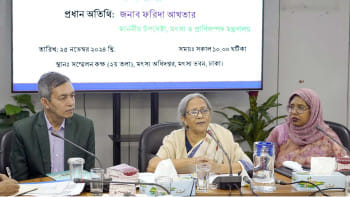Need for a factual assessment

The Muslims make 14.2 percent of India's 1.25 billion people. But, 25 percent of India's 370,000 beggars are Muslims. The newly released data by researchers at the University of California, Davis, and the London School of Economics, published in the journal Human Nature, also show that the Muslim population inside Indian jails is rising. For example, Maharashtra jails have 31.09 percent Muslim prisoners against a state average of 19.06 percent. Arthur Koestler famously writes that statistics don't bleed, but it's the detail which counts. What counts in this instance is that the plight of the second largest Muslim population in the world after Indonesia is nothing but dismal.
The data give us the numbers for education and government jobs, and the Indian Muslims lag behind in both areas. How that happened can be argued in many ways, but part of it surely is discrimination against this minority group, and part of it is the vicious circle in which they have got themselves trapped. Roughly 160 years after the end of the Mughal rule in India, the fate of marginalised Muslims reckon the dwindling legacy of their ruling ancestors.
The Khans in Bollywood and business tycoons like Azim Premji are exceptions that prove the rule. There are a few mafia dons in Mumbai, and a handful of politicians, who still signify the sporadic highpoints of the Muslim might. But the preponderant majority of the Muslims have their fate sealed in poverty and squalor. The glories of emperors and nawabs are mocked by the worries that clutter the downtrodden Muslims in India.
The researchers measured not just income and wealth but also occupation, education, and longevity, and found that upper-class families took 300 to 450 years before their scions fell back into the middle class. Throughout society, poor families, taken as a whole, took an equal amount of time. They worked for 10 to 15 generations to climb their way up into the middle class. Illiterate English village artisans in 1300 took seven generations to incorporate fully into the educated elite of 1500.
If 25 years make a generation, then the Muslim influence in India dissipated in over six generations. Times of India reported in 2010 that a sixth generation descendant of Bahadur Shah Zafar was struggling to make ends meet in Hyderabad, still hoping that the Indian government would release properties of the erstwhile Mughals to their legal heirs. Not all the Muslims are royal descendants and many insolvent families many years ago must have moved up the social ladder.
But an overwhelming number of Muslims in India appears to have slipped below the poverty line. And they are punching above their weight for all the wrong reasons. In an interview with Deutsche Welle in 2011, a leading Muslim thinker of India, Asghar Ali Engineer, explained that the Muslim middle class shrank in India after 1947, and it was too small to assert itself and failed to produce effective leadership.
Engineer then elaborated that although a new Muslim middle class began to emerge in northern India from the 1980s onwards, it emerged largely from the Muslim "low" castes. Their quest for upward social mobility and assertion is often expressed in the form of a very conservative religiosity, such as building fancy mosques or patronising madrassas. He claimed that it only exacerbated the malaise of the Muslims rather than solving it. Almost all Muslim organisations in India are led by mullahs because the vast majority of Indian Muslims are disadvantaged - economically, educationally, socially and intellectually, he explained.
How does it compare with the minorities in Bangladesh in all of the above four categories? Not to incite bias or resentment, we should have a factual assessment of where we stand in minority relations compared to our "big-brother" neighbour. We have heard the minority leaders of this country complaining about their conditions.
For the sake of all, we need to have a social intelligence dashboard to clearly understand our relationships. That will tell us if we are doing enough to smoothen the spikes. When we hear about minorities being dispossessed from their lands, businesses and homes, it is more about power struggle than anything else. The strong has forever bullied the weak, who are physically, economically and politically disadvantaged.
The true test is whether all citizens have an equal opportunity to seek education, find jobs, buy property, and enjoy legal protection. That alone tells who's advantaged in a society and who's deprived. Statistics don't bleed alright, but opinions based on them can cause, contain or check bloodshed.
The writer is Editor of the weekly First News and an opinion writer for The Daily Star. Email: badrul151@yahoo.com.


 For all latest news, follow The Daily Star's Google News channel.
For all latest news, follow The Daily Star's Google News channel. 



Comments